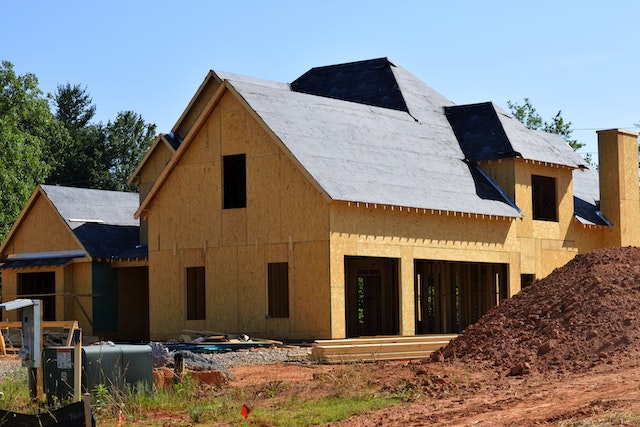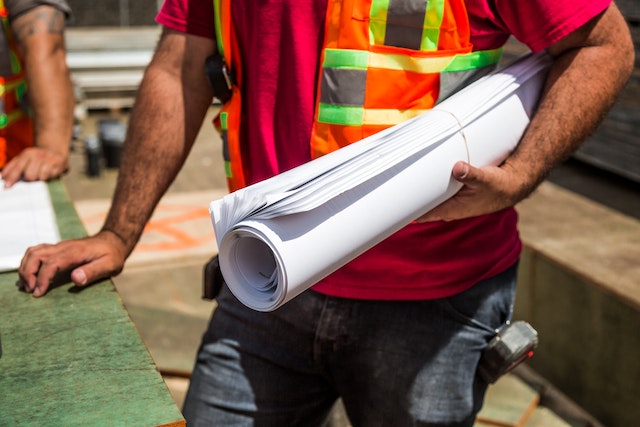Putting a roof on the house or building may seem like a simple task, but many rules must be followed to ensure the job is done right. Do you need a permit to replace a roof in California?
The California roofing codes are a set of rules that all builders and contractors must follow to make sure that building in the state is done safely. California’s roofing laws cover everything from whether or not the roofing company has a license to what kind of shingles must be used and how steep the roof must be.
As a leader in solar energy, California has roofing rules that include installing roofs that use less energy.
California Roofer Licensing

Any roofer or contractor you hire should have a license and know all of California’s strict roofing rules. Contractors and roofers who work on projects in a state that cost $500 or more must get a license from the Contractors State License Board. In many cities, businesses also need a license that works in that area.
A valid license shows that the roofer or contractor knows the rules of the state and has workers’ compensation insurance in case of an accident or injury. Working with a licensed professional means you don’t have to worry about extra costs like property damage, a worker getting hurt on your property, or work that isn’t done right or at all.
The roofer’s business card, website, and any other advertising he does should include information about his license. You can check online to see if the roofer’s license is still valid and up to date through the Contractors State License Board.
Needed Roofing Permits
Once you’ve found a licensed contractor who is ready to work on your roof, they’ll need to get a roofing permit. Different districts have different rules about roof permits. For example, in Daly City, the Department of Economic and Community Development needs a permit application for any roofing work that covers more than 100 square feet. In Palm Desert, you need a permit for any work or repairs on your roof.
A roofing permit costs money, and the amount varies from city to city. Most of the time, the contractor you hire gets the permit, but you pay the fees. If you work on your roof without a permit when one is needed, you could get fined. Make sure you get the right permits before you start your roofing project.
California Roofing Codes

Roof laws in California can be found in the California Residential Code for homes and the California Building Code for buildings that are not homes. Under the California Residential Code, there are rules about everything from what materials can be used to how the roof should be covered and insulated.
There are also rules about fire classification, weather protection, re-roofing, roof drainage, and solar power. The California Residential Code covers everything that is needed to roof or re-roof a typical home. In Chapter 9 of the California Residential Code, there are rules about the design, materials, construction, and quality of roof assemblies for homes.
All of the parts of a roof must be safe from weather and fire, and they must also work well together. The code outlines distinct regulations for various roofing materials such as asphalt shingles, clay and concrete tiles, metal roof shingles, and mineral-surfaced roll roofing. Additionally, it provides guidelines for slate and slate-like shingles, wood shingles, wood shakes, and metal roof panels.
Chapter 8:
Chapter 8 of the California Residential Code has rules about how roofs and ceilings should be built. These rules cover how roof-ceiling systems are designed and built, including roof framing, roof drainage, roof sheathing, ceiling finishes, roof ventilation, and access to the attic.
Chapter 8 gives details about things like what kind of wood can be used, how much water is in fire-resistant wood, how far apart rafters can be, and how ceiling joists can be used. For each part, this code must be followed to the exact feet and inches that are listed.
Chapter 15
In Chapter 15 of the California Building Code, there are rules about the design, materials, construction, and quality of roof assemblies and structures for commercial buildings. The California Building Code addresses weather protection, fire classification, roof insulation, roof covering regulations, and the best materials to employ.
Additional regulations apply to non-residential buildings, such as businesses and commercial structures, under this section of California’s roofing laws. The California building code includes roofing regulations for penthouses, tanks, cooling towers, domes, flagpoles, and rooftop fences on buildings
It takes into account everything a building may have besides a typical residential roof. Roofers, regardless of the building type, must possess a thorough understanding of California’s roofing laws to ensure proper compliance. A city inspector will monitor the roofing project to ensure it complies with local building codes during its execution. If necessary they will make changes in the middle of the project.
Cool Roofs in California.
The idea of a “cool roof” is something that is only found in California. Cool roofs are made of materials that reflect the sun’s heat away from the roof’s surface. This means that the roof holds on to less heat and lets less of it out.
They make it less necessary to use air conditioning because they naturally cool the building. This cuts down on electricity bills and carbon emissions. Because of this, cool roofs are now part of Title 24 Building Energy Efficiency Standards, which is California’s energy code.
Cool roofs are also required for homes in some climates where more than half of the roof is replaced, recovered, or repainted. Commercial buildings that replace, recover, or recoat less than 50% or 2,000 square feet of their roofs must have cool roofs.
Only some roofs can be called “cool roofs.” Under Title 24, the Cool Roof Rating Council has to give the roofing materials a high enough rating.
2 / 2
Meeting code-required Solar Reflective Index values is imperative for roofing materials to reflect solar energy back into the air.
Getting your roof replaced can be expensive because you need to hire professionals who can do the job quickly. If you have a roof with 1,500 square feet put on your house, labor for this kind of project will cost between $1.00 and $1.50 per square foot.
This means that labor alone would add between $1,500 and $2,250 to the total cost of your project. But you can avoid these costs if you do the installation work yourself. Roof replacements are difficult home repair tasks, so do your research first.
Roofing permit for cool roofs
If lacking experience, DIY roof replacement can be risky, requiring purchase of proper tools and a significant time investment. You will need a roofing permit if you want to replace your roof from top to bottom. This will make sure that your project follows California building codes. You might not need a permit if the repairs aren’t too big.
On the other hand, you will need a permit for any major repairs. Before doing this project, you should know that a homeowner’s insurance policy doesn’t always cover DIY roofs. You should ask your insurance company about this as soon as possible in the project.
Replacing your roof without a permit may result in significant fines and a city directive to undo any completed work. Replacing your roof without a permit may result in substantial fines and city directives to undo any completed work. This article tells you what you need to do to get a permit to replace your roof.
Renewal of Roof Covering.
This information bulletin is intended to explain the permitting requirements for the renewal of roof coverings. The provisions of Chapter 15 of the California Building Code and Chapter 9 of the California Residential Code shall govern the design, materials, construction and quality of roof assemblies and rooftop structures, as applicable and as amended by the San Diego Municipal Code (SDMC) in Chapter 14, Article 5, Division 15.
Permit Requirements

A permit is mandatory for roof covering renewal (replacement, alteration, or modification) when any of these conditions are met:
- Where alteration or replacement of structural framing members, roof sheathing/decking (plywood or oriented strand board), support elements, lateral-resisting elements, or foundation system is required due to renewal of roof covering. Structural framing plans and structural calculations are required to justify for adequacy of vertical load and lateral load capacity of the structural system.
- Where the existing wood shakes, wood shingles, or asphalt shingles are removed and replaced with a new roofing material weighing more than six (6) pounds per square foot. Structural framing plans and structural calculations to verify the adequacy of the roof framing system are required.
- Where the existing spaced ‘skip’ sheathing is removed and new roof sheathing/decking (plywood or oriented strand board) is installed. Structural framing plans and structural calculations to verify the adequacy of the roof framing system are required.
- A permit is always necessary for renewing roof coverings when the project site involves a designated historical resource or an adopted historic district. See Section II of this information bulletin for additional information.
FAQ
Do I need a permit to replace my roof in Washington state?
When removing and replacing old roofing with the same roofing type, no permit is needed. If adding an additional layer to existing roofing, a pre-roof inspection and permit is required. Changes to a roofline also require a permit.
Do you need a permit to replace a roof in Virginia?
Re-Roofing permits are required for all commercial buildings, townhouses, and single-family dwellings when replacing 8 or more sheets of plywood. Begin Work!
What requires a permit in Virginia?
Permits are required for the construction of a new building, shed, deck, additions or renovations to existing structures. Permits are necessary for minor repairs, HVAC installation, plumbing, electrical fixtures, and demolishing or relocating structures in accordance with regulations.
What happens if you build without a permit in Washington state?
You may be penalized if you build without a permit or fail to receive final inspection permission.


